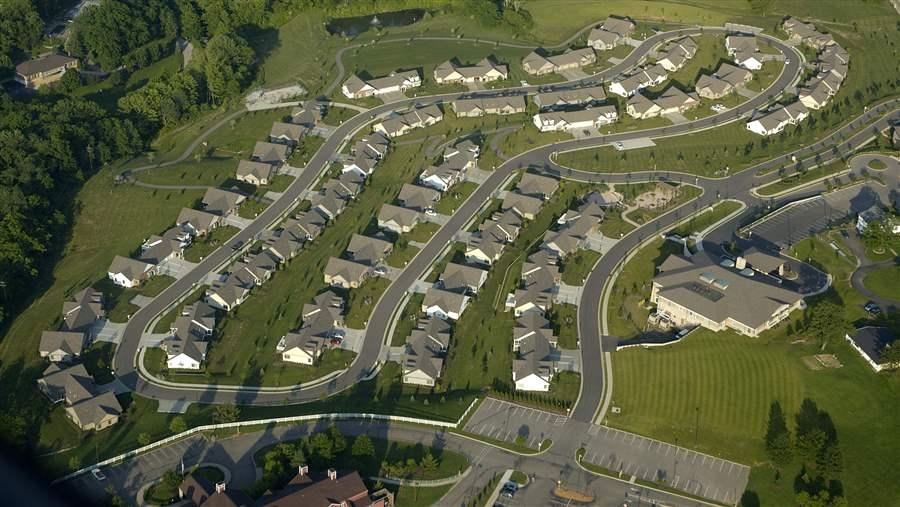Friday, April 5, 2019
After a slowdown in late 2018, some initial data for 2019 show U.S. housing demand remains solid, buttressed by low unemployment and improving demographics, writes Robert Dietz, chief economist of the National Association of Home Builders (NAHB). Housing affordability concerns—caused, in part, by rising construction costs—remain the primary hurdle for housing market expansion.

Yet despite affordability headwinds and slow sales volume, homeownership metrics improved during the final quarter of 2018. The homeownership rate rose to 64.8% and the total count of homeowners has now recorded 10 straight quarters of solid gains.
However, macro concerns persist. GDP growth in the fourth quarter came in at a rate of 2.6% (2.9% for the year). NAHB is forecasting a weak first-quarter growth rate below 2%. This reading is consistent with the soft labor market report for February, with only 20,000 net jobs created for the overall economy and a job loss of 10,900 for residential construction.
Moreover, access conditions for acquisition, development, and construction (AD&C) loans have moved from positive to neutral, according to a recent NAHB survey, and a finding that most rates have increased 75 basis points over the last year. As a result, Federal Deposit Insurance Corp. data show the stock of outstanding AD&C loans declined in the final quarter of 2018, the first decrease since 2013.
Further, NAHB reports that despite a period of weakness during the fall of last year, new home sales ended 2018 up 1.5% compared to the total for 2017. Contracts for new, single-family home sales increased nearly 4% to a 621,000 seasonally adjusted annual rate, according to estimates from a U.S. Department of Housing and Urban Development and Census Bureau joint release. However, the surprisingly strong November pace initially reported was revised down from a 657,000 rate to a more-expected 599,000.
For 2018, new single-family home sales ended at 622,000, compared to 613,000 in 2017. While the December pace improved, the current rate of sales remains off the post-Great Recession trend due to housing affordability concerns made worse by the rise in mortgage interest rates at the end of the year. Mortgage rates have declined in 2019, which in turn should lead to additional new-home demand. Builder confidence has also stabilized in recent months.
Regionally, new-home sales in 2018 were 16% lower in the Northeast and down 1% in the West. Sales were 4% higher in the South and up 6% in the Midwest. New-home prices unexpectedly increased in December, rising to a median price of $318,600. However, prices were lower than a year ago—$343,300—owing to rising use of price incentives and a slow change toward additional entry-level inventory. Inventory continued to rise in December, increasing to 344,000 homes available for sale. A year prior, new single-family home inventory stood at 294,000. The count of completed, ready-to-occupy new single-family homes in inventory, seasonally adjusted, increased from 63,000 in December 2017 to 71,000 in December 2018.
(SOURCE: The Weekly Propane Newsletter, April 1, 2019. Photo courtesty Pew Trusts)

Yet despite affordability headwinds and slow sales volume, homeownership metrics improved during the final quarter of 2018. The homeownership rate rose to 64.8% and the total count of homeowners has now recorded 10 straight quarters of solid gains.
However, macro concerns persist. GDP growth in the fourth quarter came in at a rate of 2.6% (2.9% for the year). NAHB is forecasting a weak first-quarter growth rate below 2%. This reading is consistent with the soft labor market report for February, with only 20,000 net jobs created for the overall economy and a job loss of 10,900 for residential construction.
Moreover, access conditions for acquisition, development, and construction (AD&C) loans have moved from positive to neutral, according to a recent NAHB survey, and a finding that most rates have increased 75 basis points over the last year. As a result, Federal Deposit Insurance Corp. data show the stock of outstanding AD&C loans declined in the final quarter of 2018, the first decrease since 2013.
Further, NAHB reports that despite a period of weakness during the fall of last year, new home sales ended 2018 up 1.5% compared to the total for 2017. Contracts for new, single-family home sales increased nearly 4% to a 621,000 seasonally adjusted annual rate, according to estimates from a U.S. Department of Housing and Urban Development and Census Bureau joint release. However, the surprisingly strong November pace initially reported was revised down from a 657,000 rate to a more-expected 599,000.
For 2018, new single-family home sales ended at 622,000, compared to 613,000 in 2017. While the December pace improved, the current rate of sales remains off the post-Great Recession trend due to housing affordability concerns made worse by the rise in mortgage interest rates at the end of the year. Mortgage rates have declined in 2019, which in turn should lead to additional new-home demand. Builder confidence has also stabilized in recent months.
Regionally, new-home sales in 2018 were 16% lower in the Northeast and down 1% in the West. Sales were 4% higher in the South and up 6% in the Midwest. New-home prices unexpectedly increased in December, rising to a median price of $318,600. However, prices were lower than a year ago—$343,300—owing to rising use of price incentives and a slow change toward additional entry-level inventory. Inventory continued to rise in December, increasing to 344,000 homes available for sale. A year prior, new single-family home inventory stood at 294,000. The count of completed, ready-to-occupy new single-family homes in inventory, seasonally adjusted, increased from 63,000 in December 2017 to 71,000 in December 2018.
(SOURCE: The Weekly Propane Newsletter, April 1, 2019. Photo courtesty Pew Trusts)

